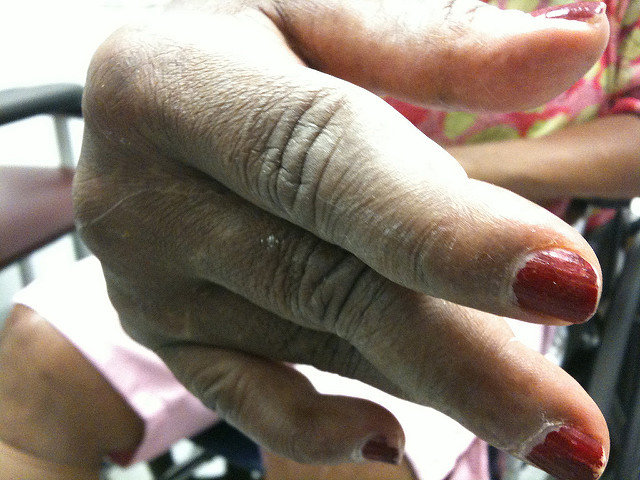Humira: How Does Humira Work for Rheumatoid Arthritis?
Having rheumatoid arthritis can be a pain, literally. Joints ache and are stiff, and the chronic struggle with discomfort can wear you down and make you depressed and unhappy. Fortunately, there are medications like Humira that can brighten up your life again, help you feel better, and allow you to move around with less pain. But should you take them? Are they right for your needs, and are they safe? Getting those types of questions answered can help you work with your doctor to determine if Humira is right for you. Here’s what you need to know about this particular medication, what it can do to help, and its side effects.
What is Humira Used For?
People take Humira to treat rheumatoid arthritis that is moderate or severe. These patients are looking for pain relief, but the treatment should also prevent the progression of rheumatoid arthritis (RA). Patients with RA are treated with medications, either alone or in combination, and when they are effective, they improve the possibility of obtaining symptomatic relief and slowing the progression of the disease. If you have RA, you know it’s not like “standard” arthritis, where you have stiffness and pain but no real progression of any disease process. While arthritis typically strikes older people, RA can occur in anyone, including younger people and even children.

Does Humira Work By Itself?
Some people take Humira alone, and others take the drug in combination with methotrexate or another type of RA medication. Which option is best is something for you and your doctor to decide, based on how severe your RA already is when you are diagnosed, how fast it seems to be progressing, as well as other factors. It is very important to give your physician a detailed past medical history including allergies, and medications that you are currently taking, including other RA treatment medications, over the counter medications, and supplements.

What Are Humira’s Side Effects?
There are side effects that can occur with Humira. Most of them are minor, but some can be very serious. It’s important to be aware of the symptoms of a Humira side effect, so you can tell your doctor right away if something isn’t right or if you experience health problems that you think could be related to the medication. The most common side effects you will see with Humira are:
- Back pain
- Nausea
- Headaches
- Rash
- Upper respiratory or sinus infections.
But these are not the only side effects you may experience, as there are more serious side effects that do sometimes occur. You should call your doctor if you experience:
- Bruising or bleeding that is unusual for you
- Paleness, weakness, or faintness
- Warm, red skin or skin sores
- Problems with your vision
- Tingling or numbness
- Chest pain
- Shortness of breath
- Hives, itching, or swelling
- New joint pain
- Signs of infection
- Trouble swallowing or breathing
Most people will be able to take Humira successfully for their RA, and they will not experience these serious side effects, but it is important to know what to look for. Because Humira suppresses your immune system in order to treat the RA, it also reduces your bodies’ ability to fight off infections and serious infections and even death can occur. Some cancers have occurred or worsened in patients who are taking this medication. Tell your doctor if you have a history of infection or cancer, including whether you have an active or current problem, or have had problems with these issues in the past. That way you and your doctor can work together to make a decision on your treatment.
How Effective is Humira for RA?
Humira has been shown to be effective in many patients, although not everyone who takes the drug sees a dramatic improvement. Controlled, randomized studies have been done to examine the effectiveness of Humira when it comes to treating RA. Some have evaluated the drug on its own, while others have looked at it paired with methotrexate or other types of RA medications. At the six-month mark, more than 60% of patients reported satisfactory and noticeable results, and these results were greatest when Humira was combined with methotrexate.

A “major clinical response” was experienced by 20% of patients after six months of taking Humira. This indicates that, while the drug is effective on its own and in combination with other medications, it does not work for everyone. Some people do not respond to Humira as well as others do, and some have adverse side effects that cause them to stop taking the medication. The only way to know whether Humira will work for a particular person with RA is by administering the drug for a trial period to test for effectiveness. This trial should only be done after the doctor has evaluated the patient’s medical history including allergies and determined that Humira is a safe and effective treatment choice for the individual patient.
How is Humira Taken?
Humira is taken by subcutaneous (under the skin) injection once every other week. A typical dose is 40 mg, but the dose can vary based on patient response. Additionally, some patients benefit much more strongly from weekly injections, so talking to your doctor about what is right for you and your RA symptom relief is a very important part of your treatment. You want to have the best chance of seeing a good outcome and a high level of symptom relief if you decide to take Humira, and your doctor can help you find the dosage and medication combination that will be right for you.

Patients should be taught how to administer Humira safely and effectively by qualified personnel. Don’t take Humira if you or a designated caregiver haven’t been taught how to properly do a subcutaneous injection. Ask your doctor if you’re unsure about anything relating to Humira or any other medication.
